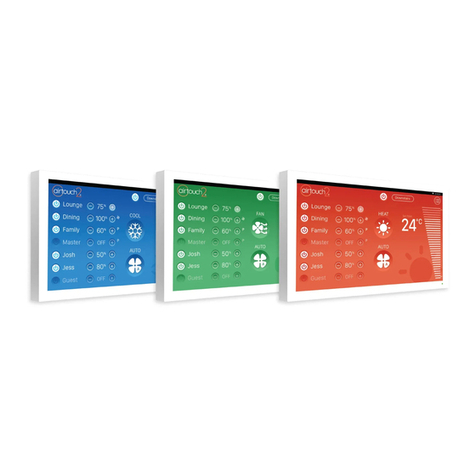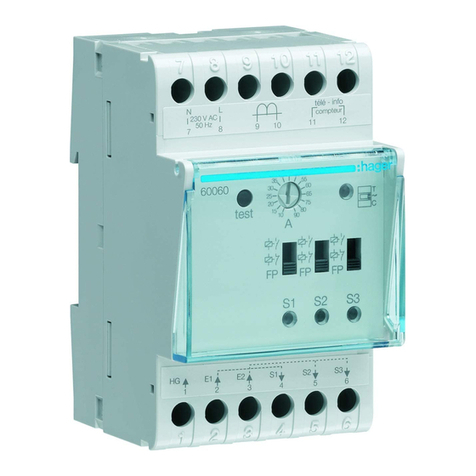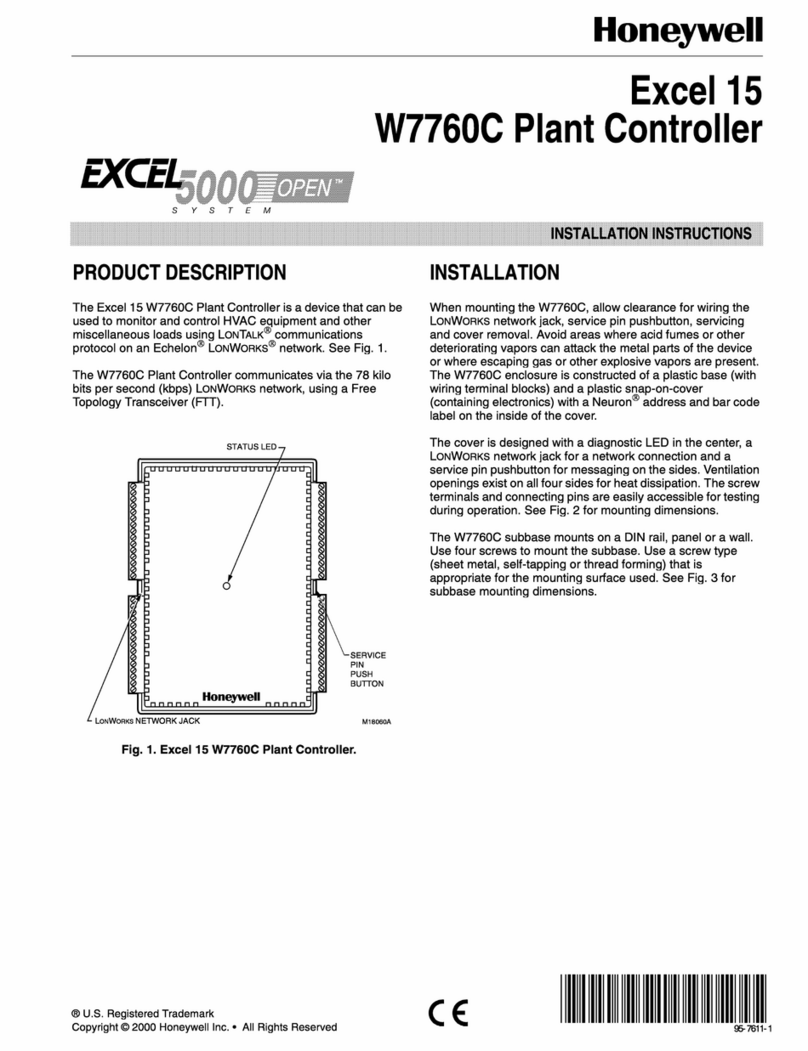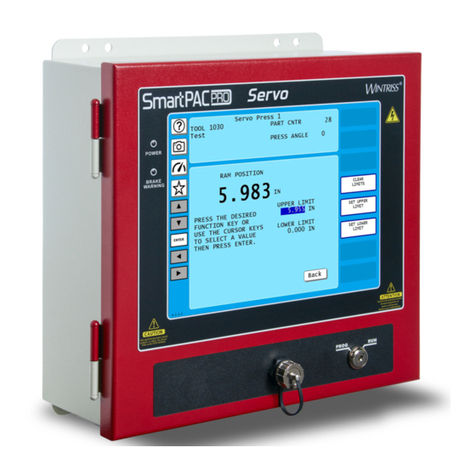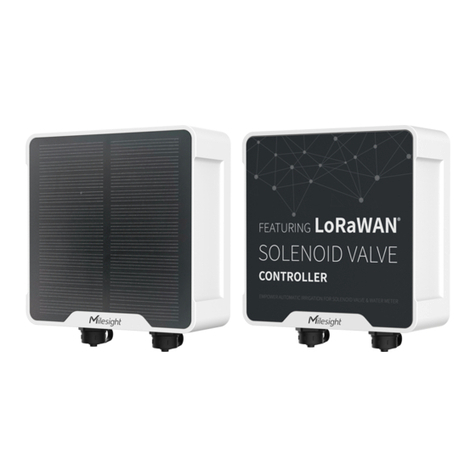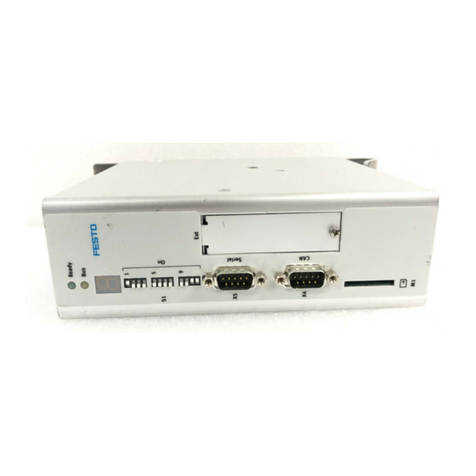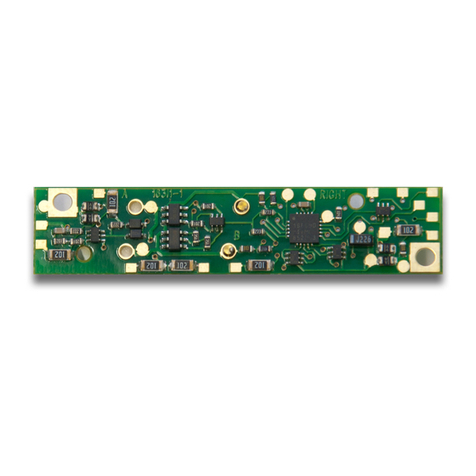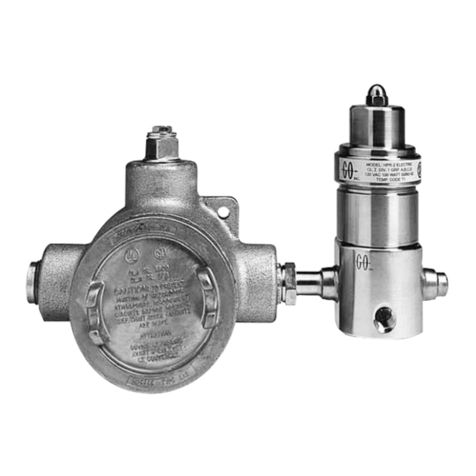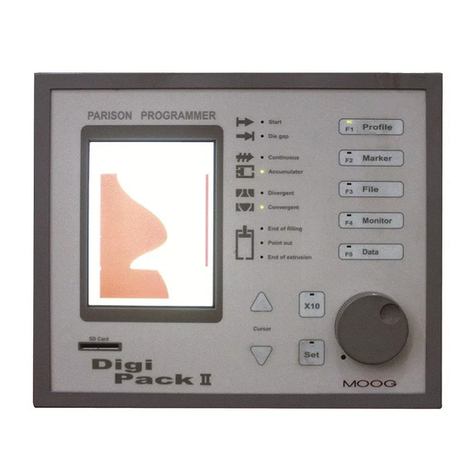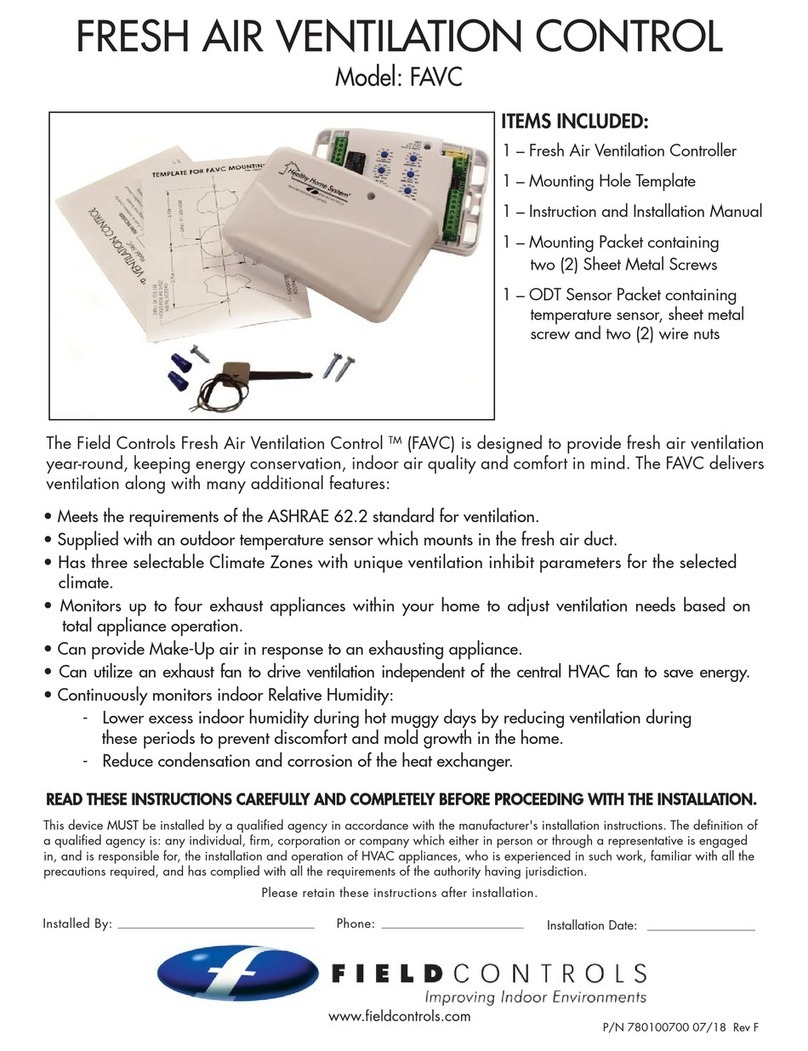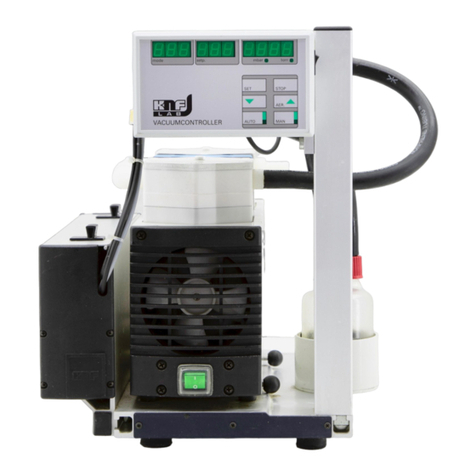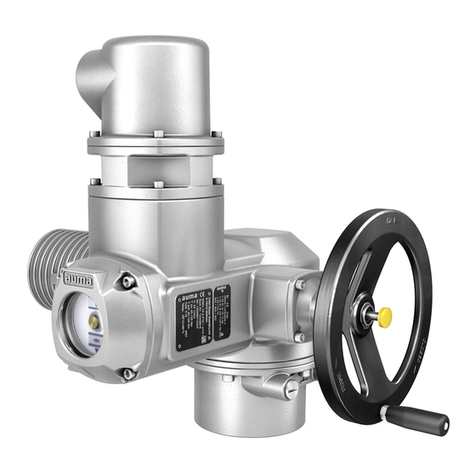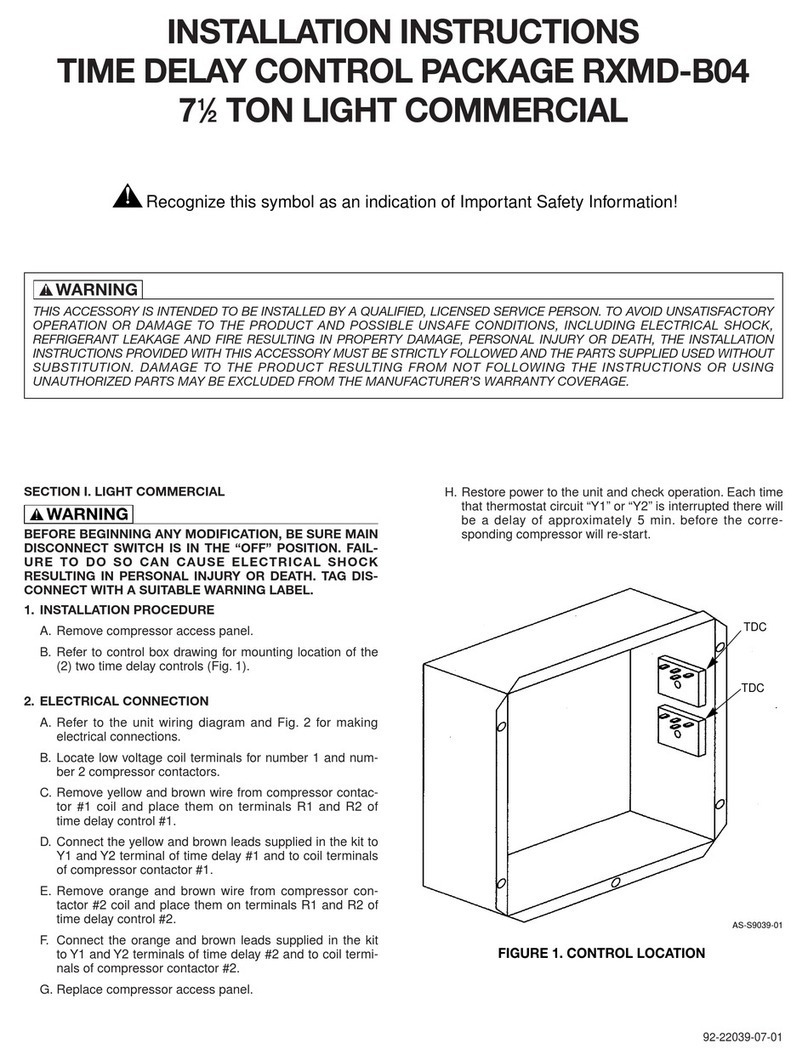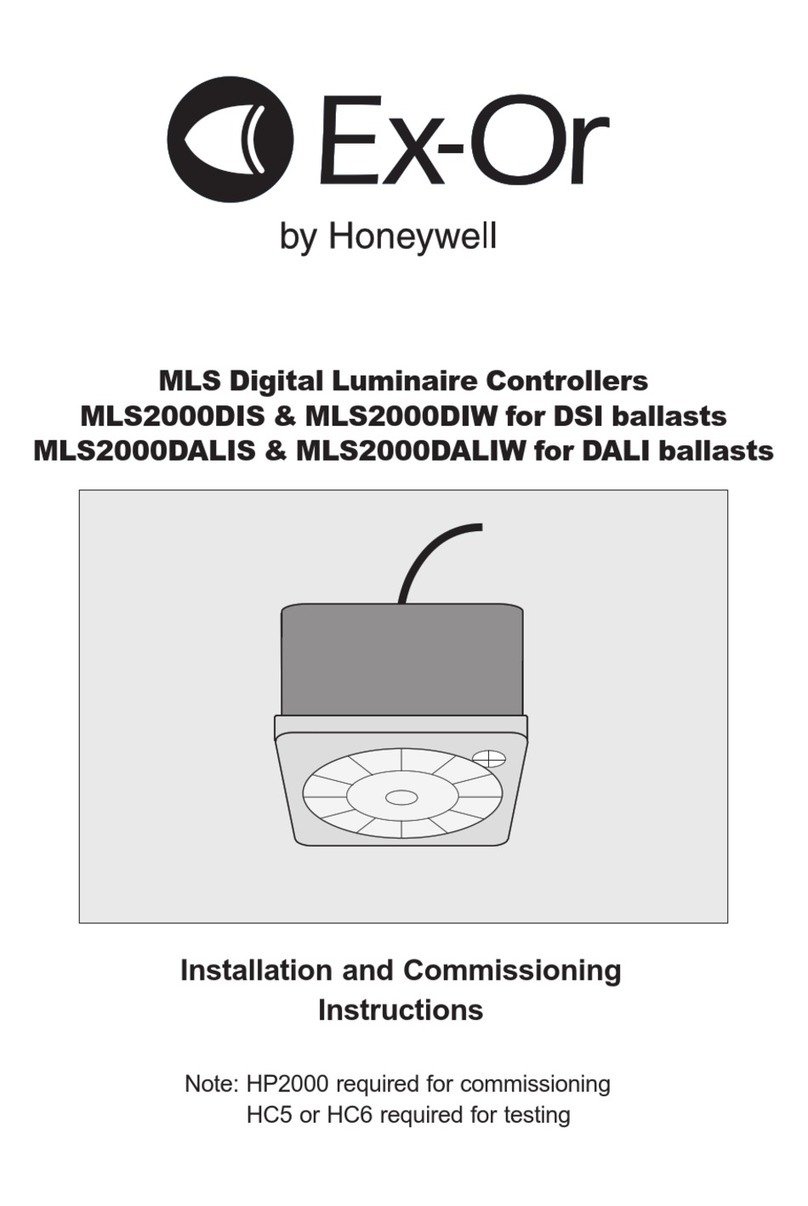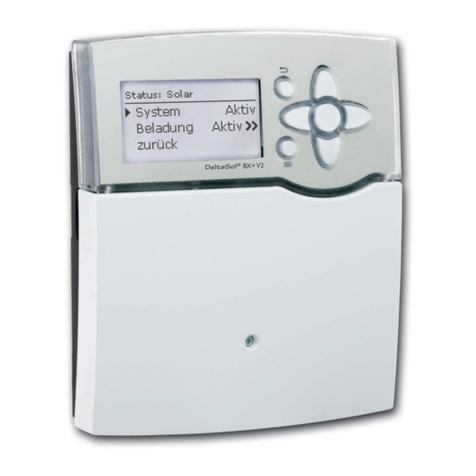GDI COMMUNICATIONS 2070-6A User manual

2070-6A Manual 1
2070-6Asm v2 Standard Manual A00886-A.doc
2070-6A
Manual
Dual 1200 baud Modem
For The
2070 Controller
GDI 2070-6A MANUAL
This Manual covers Modems with the Serial numbers……………D700000 and up.

2070-6A Manual 2
2070-6Asm v2 Standard Manual A00886-A.doc
GDI 2070-6A Manual
This Manual covers Modems with the Serial numbers……………D700000 and up.
GDI COMMUNICATIONS, LLC
280 Interstate 80 Exit 1
PO Box 1330
Verdi, NV 89439
Phone (775) 345-8000 Fax (775) 345-8010

2070-6A Manual 3
2070-6Asm v2 Standard Manual A00886-A.doc
TABLE OF CONTENTS
General Description ........................................................................................ 4
Specifications .................................................................................................. 4
Installation....................................................................................................... 6
SWITCH 3&7 POSITION TABLE ............................................................ 7
FUNCTION.................................................................................................. 7
POS............................................................................................................ 8
MAINTENANCE AND ADJUSTMENTS .................................................... 9
ADJUSTMENTS ............................................................................................ 9
AMPLITUDE ADJUSTMENT .................................................................... 10
FREQUENCY ADJUSTMENT ................................................................... 10
SYMMETRY ................................................................................................ 10
TROUBLESHOOTING................................................................................ 10

2070-6A Manual 4
2070-6Asm v2 Standard Manual A00886-A.doc
General Description
The 2070-6A Modem is a dual 1200
Baud FSK Modem for the 2070
Controller, which utilizes the latest
surface mount technology. The GDI
2070-6A meets or exceeds the
CALTRANS Transportation Electrical
Equipment Specifications (TEES) of
August 16, 2002 and applicable
addendum. This Modem plugs into the
A2 to A5 and A1 slots of the 2070
Controller and is held in place with two
thumbscrews. The front panel has two
M14 type connectors that are identical to
the C2S and C20S connectors on the 170
Controllers. Therefore, cables made for
the 300 series cabinets will work with the
2070-6A.
The 2070-6A also converts the EIA-485
signals for SP1-4 on the back plane of the
2070 to EIA-232. These signals are
available in the M14 (C2 and C20)
connectors on the front panel if the
Modem sections are not being used. A
front panel switch can turn off each
section of the Modem individually so that
it doesn’t interfere with the EIA-232
communication that might be going on.
The front panel of the 2070-6A also has
Full Duplex/Half Duplex switches for
each channel. A 5th switch powers down
the entire Module so that it can be
inserted or taken out while the power to
the 2070 is on. This prevents any of the
parts on the 2070-6B Modem or the 2070
Controller from being harmed during
insertion or being unplugged.
Six LEDs are also located on the front
panel, 3 for each channel. They include
Transmit Data (TX), Receive Data (RX),
and Carrier Detect (CD).
All of the RS-232 signals in the C2S and
C20S connectors are optically isolated
from the controller signals. The 5V
supply and Ground in the C2S and C20S
connectors are also isolated and
individually fused at 200ma with a solid
state PTC resettable to protect the 2070’s
internal power supply.
The 2070-6A Module is built with
surface mount parts for increased
reliability and to reduce the parts count.
The use of all surface mount parts has
allowed us to put all of the parts on a
single PC Board. The digital section and
first modem are on the top side of the
board. The second modem is on the back
of the PC Board. Power and Ground
planes prevent crosstalk and isolate the
two modems from each other
The GDI 2070-6A also has an anti-
streaming option that can be selected
with a dipswitch on the PC Board. Anti-
steaming will prevent a remote site from
monopolizing the communication path in
a multi-drop configuration. Anti-
streaming is not normally used on the
Master end.
Separate switches also allow the timings
on the handshake and modem control
signals to be cut in half for faster
communications.
Specifications
Each section of the Modem is identical
and therefore these specifications apply
both Modems.
Physical….220mm x 177mm x 40.44mm.
Temp………..-37 to +74 degrees C.

2070-6A Manual 5
2070-6Asm v2 Standard Manual A00886-A.doc
Humidity…….5 to 95 % non-
condensing.
Power …….….5 V @ 100ma
+12V @ 150 ma
-12V @ 150ma
Data Rate……..0-1200 baud.
Modulation…….Phase Coherent FSK.
Data Format…Asynchronous, serial by
bit
Line interface…..Private Metallic wire
600 Ohm
Mark Frequency……1200 Hz +/- 1%.
Space Frequency……2200 Hz +/-1%.
Soft Carrier…………900 Hz +/- 1%.
Receive Sensitivity….0 to -40 dB.
Output Level……-8 to 0 dB cont. Adj.
(set to 0dB)
CTS Delay………....12 +/-2 ms.
Rec. line Signal Detect Time...8 +/-2ms
Receive Line Squelch….6.5 +/-1ms
0ms out.
Soft Carrier Turnoff Time…10 +/-2ms.
Modem Recovery Time….<22 ms.
(ALL of these times can be cut in Half)
Error Rate….<1 in 105@ S/N of 16 dB.
Anti-streaming time-out….~5 sec.
C2 and C20 Pinout
Pin Function Pin Function
A Audio In J RTS
B Audio In K Data In
(TXD)
C Audio Out L Data Out
(RXD)
D +5 VDC M CTS
E Audio Out N DC Gnd #1
F NA P NA
H CD R NA
96 pin connector pin out for the 2070-6A
A2-5 Pin Assignments
Pin A B C
1 SP1-TXD+ SP6TXD+ SP5TXD+
2 SP1-TXD- SP6TXD- SP5TXD-
3 SP1-RXD+ SP6RXD+ SP5TXC+
4 SP1-RXD- SP6RXD- SP5TXC-
5 SP1-RTS+ SP1-
TXC(O)+
SP5RXD+
6 SP1-RTS- SP1-
TXC(O)-
SP5RXD-
7 SP1-CTS+ SP1-
TXC(I)+
SP5RXC+
8 SP1-CTS- SP1-
TXC(1)-
SP5RXC-
9 SP1-DCD+ SP1-RXC+ SP3TXD+
10 SP1-DCD- SP1-RXC- SP3TXD-
11 SP2-TXD+ SP4TXD+ SP3RXD+
12 SP2-TXD- SP4TXD- SP3RXD-
13 SP2-RXD+ SP4RXD+ SP3RTS+
14 SP2-RXD- SP4RXD- SP3RTS-
15 SP2-RTS+ SP2-
TXC(O)+
SP3CTS+
16 SP2-RTS- SP2-
TXC(O)-
SP3CTS-
17 SP2-CTS+ SP2-
TXC(I)+
SP3DCD+
18 SP2-CTS- SP2-
TXC(I)-
SP3DCD-
19 SP2-DCD+ SP2-RXC+ SP3TXCO+
20 SP2-DCD- SP2-RXC- SP3TXCO-
21 DC Gnd #1 CH2 Disable SP3TXCI+
22 Network 1 NA SP3TXCI-

2070-6A Manual 6
2070-6Asm v2 Standard Manual A00886-A.doc
23 Network 2 A* installed SP3RXC+
24 NA LINESYNC SP3RXC-
25 Network 3 Powerup CPU Reset
26 Network 4 Power
Down
FPLED
27 DC Gnd #1 DC Gnd #1 DC Gnd #1
28 +12V
Serial
-12V Serial +5VDC
STBY.
29 +5VDC +5VDC +5VDC
30 DC Gnd #1 DC Gnd #1 DC Gnd #1
31 NA NA NA
32 NA NA NA
A1 Pin Assignments
Pin A B C
1 SP3-TXD+ SP6TXD+ SP5TXD+
2 SP3-TXD- SP6TXD- SP5TXD-
3 SP3-RXD+ SP6RXD+ SP5TXC+
4 SP3-RXD- SP6RXD- SP5TXC-
5 SP3-RTS+ SP1-
TXC(O)+
SP5RXD+
6 SP3-RTS- SP1-
TXC(O)-
SP5RXD-
7 SP3-CTS+ SP1-
TXC(I)+
SP5RXC+
8 SP3-CTS- SP1-
TXC(1)-
SP5RXC-
9 SP3-DCD+ SP1-RXC+ SP3TXD+
10 SP3-DCD- SP1-RXC- SP3TXD-
11 SP4-TXD+ SP4TXD+ SP3RXD+
12 SP4-TXD- SP4TXD- SP3RXD-
13 SP4-RXD+ SP4RXD+ SP3RTS+
14 SP4-RXD- SP4RXD- SP3RTS-
15 NA NA SP3CTS+
16 NA NA SP3CTS-
17 NA NA SP3DCD+
18 NA NA SP3DCD-
19 NA NA SP3TXCO+
20 NA NA SP3TXCO-
21 DC Gnd #1 CH2 Disable SP3TXCI+
22 Network 1 NA SP3TXCI-
23 Network 2 NA SP3RXC+
24 NA LINESYNC SP3RXC-
25 Network 3 Powerup CPU Reset
26 Network 4 Power
Down
FPLED
27 DC Gnd #1 DC Gnd #1 DC Gnd #1
28 +12V
Serial
-12V Serial +5VDC
STBY.
29 +5VDC +5VDC +5VDC
30 DC Gnd #1 DC Gnd #1 DC Gnd #1
31 NA NA NA
32 NA NA NA
Installation
The 2070-6A has 5 front panel switches,
2 eight position dip switches for
configuring the Modem, and a 5 position
dipswitch for configuring the polarity of
the backplane signals. There is 1 dip
switch for each section of the Modem.
SW3 is for Modem “A” which uses the
C2S connector. SW7 is used for Modem
“B” which uses C20S. The Front Panel
toggle switches are labeled and organized
so that they are close to the connector
that they affect.
The switches labeled “ENABLE”
“DISABLE” turn the Modem section for
SP1 to SP4 On or Off. When the switch
is in the “DISABLE” position, the EIA-
232 section of C2 or C20 can be used
without interference from the Modem.
The “FULL” “HALF” switch allows you
the select Full or Half Duplex operation
for the Modem. With Half Duplex
operation only the “Audio Out” pins in
the M14 (C2, C20) are used. With Half
Duplex operation, all communication is
done over one pair of wires. This means
that communication can go in only one
direction at a time. Full Duplex
Operation allows communication in both
directions at once and therefore needs 2
pairs of wire (4 wire) to operate.

2070-6A Manual 7
2070-6Asm v2 Standard Manual A00886-A.doc
The switch labeled “ON” “OFF” is used
to turn power on and off to the 2070-6A
Module. This makes it safer to unplug
and insert the 2070-6A from the 2070
Controller with power on. The switch
should be in the “OFF” position
whenever the Module is going to be
plugged in or taken out of the Controller.
Make sure that the 2070-6A is properly
seated in its slot of the 2070 Controller
and that the thumbscrews are snug before
moving the switch to the “ON” position.
The 5 V supplies in the C2 and C20
connectors are fused at 200 ma with a
solid state fuse. This fuse will recover
automatically when the excess load is
removed. Do not attempt to take more
than 100 ma from these connectors.
The SW3 and SW7 dipswitches allow
you to select the Anti-streaming option,
whether you want local echo in the Half
Duplex Mode, and if want to use the fast
timing option. Both of the dipswitches
perform the same function for its
respective Modem. SW3 affects the
channel “A” modem or SP1 or SP3. SW7
affects channel “B” or SP2 or SP4.
SWITCH 3&7 POSITION TABLE
POSITION FUNCTION
1 Full Duplex (not used) off
2 Half Duplex (not used) off
3 RTS/CTS time
4 Soft Carrier Time
5 Half Duplex local Echo
6 Rec. Squelch Time
7 Carrier Det. Time
8 Anti-Streaming Enable
For normal 4 wire full duplex operation,
all of the switches should be OFF. If
anti-streaming is wanted, turn switch 8
ON.
If 2 wire half duplex operation is
required, switch position 5should be
turned ON so the modem won’t hear its
own transmissions.
Switch positions 1 and 2 are normally
provided by the front panel toggle
switches and should be left OFF so they
don’t conflict with the toggle switches.
Turning switch positions 3, 4, 6, and 7
ON will cut the normal times for these
functions in half. These times should be
used as last resort in a system that is
running out of time. Cutting the timing
in half can result in the system having
more errors than the system with standard
timing. This is especially true in a half
duplex, 2-wire system. The reason for
this is the normal times give the system a
chance to settle out between
transmissions. The extra energy left in
the system (on the wires) can cause errors
in the receiver. The faster turn-around
may be worth the occasional extra error
in some systems. You can save 10 ms per
transmission with the faster times. All of
the timing switches should either be ON
or OFF and not mixed.
Switch position 8 is used to select the
Anti-streaming option. The “ON”
position enables Anti-streaming. With
Anti-streaming enabled, the Modem will
only be limited to transmitting up to
about five seconds. If the Modem tries to
transmit longer, the transmitting section
will be turned off automatically.
Dropping RTS will reset the Anti-
streaming circuit allowing the Modem to
transmit again. Anti-streaming should not
be enabled when it is known that a
Master or Local Controller sends
messages that are longer than 5 seconds.

2070-6A Manual 8
2070-6Asm v2 Standard Manual A00886-A.doc
SW4 Digital Control Switch
Switch SW4 controls the polarity of the
signals coming off the backplane of the
2070. This switch is needed because of
the different interpretations of the
CALTRANS Specification concerning
the back plane signals. This switch will
allow the 2070-6A to mate with any 2070
Controller.
The SW4 switch has 5 positions with
which you can control the polarity of all
of the control and data signals. The
following table defines the switch
positions.
POS Function Inverted
RXD
and TXD
Modem
Operatio
n
1 RXD OFF ON
2 CTS ON ON
3 DCD ON ON
4 TXD ON OFF
5 RTS OFF OFF
SW4 should normally be set to the
Modem column and that is the way the
modem is shipped.
TYPICAL SYSTEM
OPERATION
In systems with FSK Modems certain
control signals must be used correctly to
assure reliable communication.
4-WIRE FULL DUPLEX systems use
2 pairs of wire to interconnect the Master
and Slave Controllers. One pair carries
data from the Master to the Local
Controllers and the second pair carries
data back from the Local Controllers to
the Master. Audio Out from the Master
connects to all of the Local Controllers’
AUDIO INs. All of the Local
Controllers’ AUDIO OUTs are connect
together and returned to the Master
AUDIO IN.
2-WIRE HALF DUPLEX systems carry
the transmitted data from the Master and
Local Controllers on the same pair. All
of the AUDIO OUTs of the system are
connected together.
With a 4-wire full duplex system you
have to be concerned with the Local
Controllers not transmitting at the same
time since they all share the same wire.
With the 2-wire Half Duplex system you
also cannot have the Local Controllers
talking over the top of the Master. There
is also less time between transmissions to
let the energy on the line dissipate. This
extra energy on the line can interfere with
the receiver circuits of the FSK Modem.
These factors make the 2-wire half
duplex system more error prone and
slower than a 4-wire half duplex system
of the same length and wire type.
Proper use of the Handshake or control
signals is essential to proper operation of
an FSK Modem system. These signals
are RTS, CTS, and DCD.
RTS is an input to the Modem and
Turns the transmitter ON. If RTS is
active, the Modem is transmitting
something. The Modem starts
transmitting the MARK frequency
(11,200 Hz) when the oscillator stabilizes
and continues to transmit MARK until a
SPACE is sent to the TXD Pin.

2070-6A Manual 9
2070-6Asm v2 Standard Manual A00886-A.doc
12 milliseconds after the RTS signal is
active the Modem to generates a CTS
signal (an Output) which tells the Master
or local controller it can start to send
data. 12 ms is required because the
receiver Carrier Detect circuit requires 8
ms of Mark frequency before it will turn
the receiver on. If you transmit data
before the 8 ms, the receiver may chop
off the first portion of the message or not
ever turn the receiver on.
If you have a system that is broadcasting
continuously and you connect a Modem
on to the line, you may find that the
modem never receives any data. This is
because the receiver circuit never sees 8
ms of continuous MARK frequency.
When RTS drops, 10 ms of Soft Carrier
will be automatically transmitted. The
Soft Carrier Frequency is detected by the
Carrier Detect circuit and shuts down the
receiver. This helps prevent excess
energy in the system from causing extra
bits being generated in the receiver
section.
It must be remembered that the
transmitter section of the Modem is still
sending out Soft Carrier 10 ms after the
last data bit is sent. This is especially
important in a 2-wire half duplex system.
HOW FAR WILL THE SIGNAL GO?
This is an important question in higher
speed FSK Modem operation. Typically,
with a 0 dB launch signal you can expect
about 5-6 miles on 22 AWG wire. With
19 AWG wire, can go about 25% further.
If more range is required, turning the
transmitter output amplitude
potentiometer clockwise can increase the
transmitter output. These POTS are
labeled AMP A for channel “A” and
AMP B for channel “B”. An extra 10
dBm of output power is available. This
will give you another 1.5 to 2 miles. You
may have more crosstalk problems in
some cable systems with the increase
output.
Additional distance can also be obtained
by changing the modem input impedance
on the middle units of a system. The
input impedance of the Modem can be
changed from 600 Ohms to 4.75K with a
jumper located near the transformers for
each channel. The jumper is labeled 600
and 4K75. Move the jumper to the 4K75
position to increase the input impedance.
The Modems on the ends of the line
should be left to 600 Ohms. This will
significantly reduce the loading effects of
each addition modem on a string.
MAINTENANCE AND
ADJUSTMENTS
The 2070-6B will not normally need any
preventative maintenance. The Output
amplitude and frequency of the
transmitter may need to be adjusted or
checked if the error rate is becoming
excessive.
ADJUSTMENTS
There are 3 potentiometers for each
section of the 2070-6A modem for
making adjustments. The potentiometers
are all located on the topside of the PC
Board. The adjustments are as follows:
1) Frequency adjustment. The
potentiometer adjusts the Mark and
Space frequency. The potentiometer
adjusts both the Mark and Space
frequency with the POT adjusted so

2070-6A Manual 10
2070-6Asm v2 Standard Manual A00886-A.doc
both frequencies are equal distant
from their nominal values.
2) Output amplitude. Sets the output
amplitude of the Modem. It is factory
set to 0 dB but can be adjusted to +10
dBm.
3) Symmetry. This adjustment varies the
slicing level of the demodulator. If
correctly adjusted, an alternating bit
pattern will have a 50% duty cycle at
the RXD output.
AMPLITUDE ADJUSTMENT
To set the Output amplitude you will
need the following equipment:
1. A 600 Ohm load that will mate to the
C2 and C20 connector. The 600 Ohm
Load is connected to pins “C” and
“E” of the connector.
2. A TRMS meter or oscilloscope
capable of measuring a 20 kHz signal
accurately.
3. Screw driver for adjusting the
Potentiometers.
Mount the load on the C2 or C20
connector and connect the meter or
oscilloscope across the load. Make sure
the Modem is set for Full Duplex
operation. Output an alternating bit
pattern to the Modem from the 2070 and
measure the amplitude with the meter.
Adjust the amplitude with the
Potentiometers marked “AMP A” and
“AMP B”.
The voltage read on the meter should be
0 dB or 0.775 V. The Oscilloscope’s
pattern should be about 2.2 V p-p.
FREQUENCY ADJUSTMENT
Use the same load as above and connect a
frequency counter across the Load. You
need to be able to generate Mark and
Space signals to the 2070-6A to check
the frequency.
Send a Space signal to the 2070-6A
section being checked. The frequency
indicated should be 2200 Hz +/- 1%.
Send a Mark signal to the Modem and
verify that the frequency shown on the
frequency counter is now 1200 +/- 1%.
If the frequency needs to be adjusted, The
Potentiometer marked “FREQ A or
FREQ B” should be adjusted with a
continuous Mark or Space signal being
sent to the 2070-6A.
SYMMETRY
Connect an oscilloscope to RXD A or
RXD B depending on whether the “A” or
“B” section is being checked. Set the
modem for “Half” Duplex operation local
echo on (switch 5 off). Send an
alternating bit pattern to the Modem.
(RTS needs to be on for all of these
tests). Make sure that you send 8 ms of
MARK before the alternating bit pattern
so that Carrier Detect will turn ON!
Check that the CD LED is ON. The
waveform should have a 50% duty cycle.
The “SYM A or SYM B” potentiometer
can be used to adjust the symmetry.
TROUBLESHOOTING
The 2070-6B is a fairly complex Modem
with hundreds of parts. This makes this
Modem hard to troubleshoot for the

2070-6A Manual 11
2070-6Asm v2 Standard Manual A00886-A.doc
average technician with limited
experience with this modem. On the
other hand this modem is constructed
with top quality parts reducing the
chance of a component failure.
There are numerous test points on the
board that will allow easy access to most
of the important signals in the Modem.
The isolated signals on the C2 and C20
connectors should be measured
referenced to pin “N” the isolated
ground. This includes the signals on U13
and U32
The 2070-6B is essentially two separate
in one package. There are very few parts
that are shared between the two modem
sections. The Front panel “ON/OFF”
switch and the connectors are included in
this group.
The chart below will help you find the
problem if you decide to fix the 2070-6A
yourself.
PROBLEM CAUSE
Both sections dead Power coming into the board or the relays could have a
problem. Check “ON/OFF” Switch or connectors and
cables. Measure power at test points
Modem is not generating
Mark and Space Freq.
No RTS or TXD coming from Top Board. Check
“Enable/Disable switch”.
Transmitter turns Off after 5
seconds
Anti-streaming is turned on and transmissions of more
that 7 seconds are being used.
No Receive Data
no LEDs
Check “Enable/Disable” Switch.
EIA-232 signals not working
in the C2 or C20 connectors
“Enable/Disable” switch not in the Disable position.
No 5V on pin “D” of C2 or
C20 connectors
Too much current being taken out of the isolated +5V.
Keep current below 200ma.

2070-6A Manual 12
2070-6Asm v2 Standard Manual A00886-A.doc

2070-6A Manual 13
2070-6Asm v2 Standard Manual A00886-A.doc
GDI COMMUNICATIONS, LLC
280 I-80 WEST EXIT 1
PO BOX 1330
VERDI, NEVADA 89439
TELEPHONE: 775-345-8000 FAX: 775-345-8010
Table of contents
